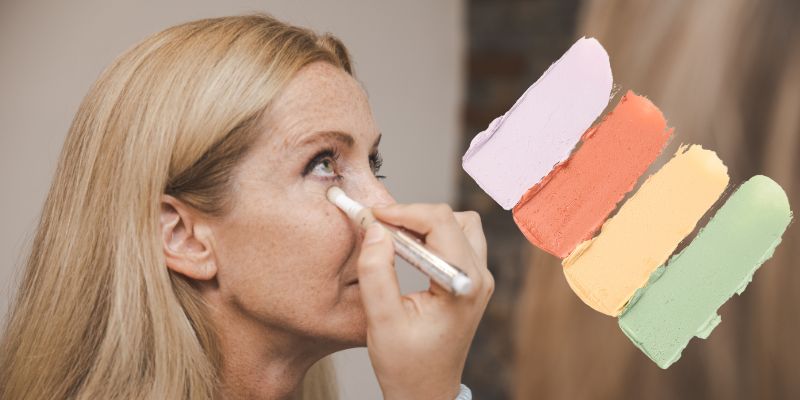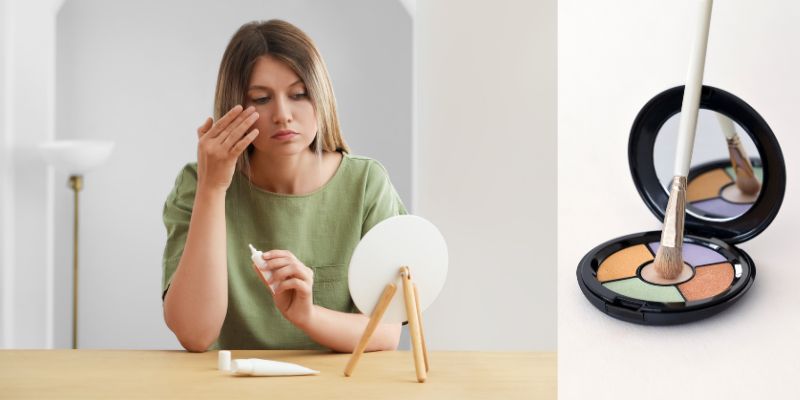Beauty
Color Correcting 101: How to Cover Dark Circles & Redness Like A Pro
Do you wake up each morning with dark circles under your eyes that create a tired appearance? Do you battle constant redness despite applying multiple concealers? You're not alone. Your skin issues remain visible despite all your foundation and concealer application methods. Here is the solution! Applying a colour corrector before makeup reduces skin discolourations.
Do you wake up each morning with dark circles under your eyes that create a tired appearance? Do you battle constant redness despite applying multiple concealers? You're not alone. Your skin issues remain visible despite all your foundation and concealer application methods. Here is the solution! Applying a colour corrector before makeup reduces skin discolourations.
Your eyes remain ashy under concealer, and your redness keeps peeking through the foundation. It's because you missed the colour correction during your routine. Let's find optimal colour correction application techniques for obtaining perfectly even-toned skin.

Why Regular Concealer Isn't Enough
Most concealers serve to brighten and add coverage, yet they struggle to eliminate discolourations from your skin tone. This is why dark circles remain grey despite light concealer application and redness showing through the foundation.
Colour correcting begins by neutralizing unwanted tones before starting base makeup. The colour wheel structure shows how opposing colour tones cancel each other.
1. The green colour neutralizes red skin tones, which helps with treating acne marks and redness.
2. Both peach and orange colours eliminate blue and purple hues, which work best for dark circles under your eyes.
3. Yellow corrects pale and purple-coloured skin hues.
4. Lavender-based products enable you to diminish the appearance of yellow tones that cause sallowness in the face.
How To Choose The Right Color Corrector For Dark Circles
Dark circles appear in various tones because skin colour influences their appearance. Selecting the appropriate colour shade is crucial for achieving a natural appearance.
1. If your dark circles have bluish or purple undertones, use a peach or salmon colour corrector, ideal for fair to medium skin tones.
2. If you have brown or deep purple undereye circles, choose a corrector with an orange or red tint for medium to deep skin tones.
3. A light peach or yellow corrector is suitable for mild dark circles with a bit of discolouration.
How to Apply It Correctly
1. Begin by applying eye cream on a well-hydrated under-eye area to prevent wrinkles.
2. Start by applying a colour corrector with your ring finger, brush, or beauty sponge, dabbing small amounts into your skin (don't rub).
3. Gently blend the product across your skin surface so that it smoothly dissolves with the natural texture of your epidermis.
4. Use concealer by selecting a colour that matches your skin tone, then blend correctly to avoid harsh edges.
5. Using a light translucent powder sets everything in its place.

How To Correct Redness Like a Pro
Red skin can develop from rosacea and acne scarring caused by irritation or normal facial redness. The green colour corrector is the most effective tool for containing redness that the foundation cannot manage properly.
1. Use a light green corrector if you have moderate rosacea or light redness around your nose.
2. Choose a full-coverage green corrector if you have moderate to severe redness (inflammation, acne).
3. Light pinkish discolouration: It could be neutralized using a yellow corrector.
Best Way to Apply Green Corrector
1. A minimal amount of this product should be used on specific red areas since a little product provides maximum benefit.
2. Blend the colour regularly towards the skin surface, but be careful not to over-rub, as the correction will disappear.
3. Gently apply foundation since vigorous rubbing can push the corrector out of place.
4. Apply powder afterwards to maintain the durability of the makeup application.
Common Mistakes To Avoid
Using a corrector of the right shade still leaves room for mistakes that can damage the finished appearance. The following errors are essential to prevent when using a green corrector:
1. A tiny amount of product will suffice due to its highly pigmented nature.
2. Not moisturizing or priming the skin results in visible patchy skin.
3. The wrong selection of shade makes discolourations more prominent and noticeable.
4. The improper blending technique results in foundation visibility through harsh lines, destroying the natural skin's appearance.
5. The concealer application should wait until you have allowed the corrector to absorb into your skin.

Should You Use Color Correctors Daily?
Colour correction can be used when you need additional perfection in your makeup or during special events, though the daily application is not always necessary. Mild discolouration allows you to skip this step since you prefer a brightening concealer as an alternative. When dealing with rigid dark circles and persistent redness, using a colour corrector significantly improves achieving perfect and even skin.
Achieve Flawless Skin With The Right Color Corrector
The struggle against dark circles and redness no longer needs to continue. The proper colour corrector lets experts and casual users tone discolouration effectively before foundation application. Using appropriate concealer shades and application techniques transforms your makeup appearance regarding dark circles, redness, and acne scars.
Are you ready to achieve perfect skin? Experiment with colour correction techniques today to see how they benefit your appearance!



